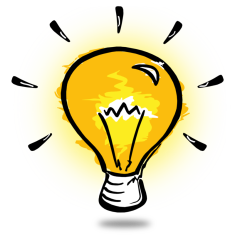 Having a prototype makes a big difference in market research, I knew of this before but it learned this again during recent customer visits. So here is a blog presenting my learning around “Power of Prototype”.
Having a prototype makes a big difference in market research, I knew of this before but it learned this again during recent customer visits. So here is a blog presenting my learning around “Power of Prototype”.
Background:
The best way to present this is by telling a tale of two ideas; to maintain confidentiality I would call them idea #1 and idea #2. Idea #1 is a new idea for us and for our customers, something that will create a product category. Idea #2 is new to us but there are products out there that serve the purpose.
Over the last few months I have talked to customers about the two ideas to gauge their interest and gather their requirements. I did two rounds of customer research. During first round, I visited few customers and discussed the innovation ideas and their requirements. The goal was to gather enough information that would help us in doing a deeper market research.
During second round, I invited a few customers to a “Solution Jam” and facilitated discussion about the ideas. The goal here is to get customers to tell us what they want from the product and will they buy if we build it. Overall expectation is to get higher customer interaction as we move from round 1 to round 2, which helps us in clearly defining the products. With this as a background, here is what happened during those customer research rounds.
Customer Research Round #1:
Idea #1: We had a good working prototype for this idea and I was able to quickly demo this prototype to get the discussion started. Many of the customers sat on the edge of their chairs and provided me with a lot of inputs about product functionality. Given that this is a new product for us and for our customers, it was exciting to see that customers had so much to share. And this level of excitement and feedback was consistent across all customer interviews.
Idea #2: We did not have a prototype for this, and we shared block level diagrams and got good feedback from the customers. Since there were other products in the market that somewhat served the purpose, they were able to compare and tell us what to do to differentiate our product. Interactions around this topic were also consistent and good.
Customer Research Round #2:
Idea #1: We decided that the prototype UI did not adhere to company standards and we did not have time to rebuild a working prototype. So we decided to drop the prototype from customer solution jams. Rather we build some screen shots that we threw into a presentation, created a story around it and shared the story with the customers. Discussion sequence was still the same and the participants were of similar background as in round #1. But customer interaction just fell off the cliff. They were struggling to imagine what this product does and went off on tangents describing the problems they have with our current products. It became increasingly difficult to keep the customers focused on the topic of discussion, and not much data was gathered from the customers.
Idea #2: We built a working prototype for this idea that we used during the solution jams. To be consistent we started with the block diagram within a presentation to gather customer inputs. After some initial discussions, we would show them the prototype and that resulted in them giving us lot of requirements. They would ask us to click some buttons, go through some screens and provide us requirements throughout the discussion. Customer interaction around this idea grew exponentially and we were able to gather a lot of customer requirements. We were also able to get them to prioritize the requirements and tell us about their price sensitivity as well.
Figure below illustrates how the customer interaction levels changes between the two research rounds for both ideas.
Conclusion:
Prototyping and demoing innovative ideas is the best way to gather detailed customer requirements, as it paints a picture in customers’ mind and helps them think of pain points that this solution can solve. Without a prototype, you run into the risk of customers’ hijacking the discussion and inundating you with current product complaints.
Please share your experiences with prototypes and customer interviews.

